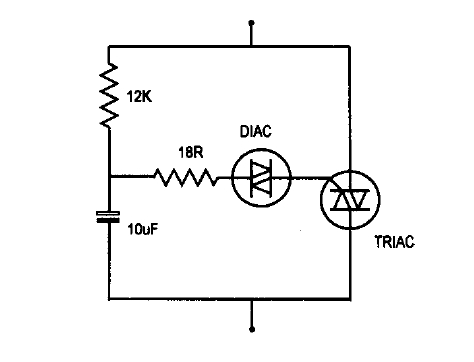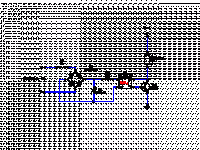X.G. said:I think it is not better than the ordinary circuit.
I don't think the original circuitry will work as it will act on high a/c signals as well.
millwood said:I don't think the original circuitry will work as it will act on high a/c signals as well.
I agree with you for a/c signals.
but in my experience,the PHOTO device work in several milliamperes.so i think above.
Hi all,
just read an article in a magazine about a simple DC protection...
it looks like in the picture.
any comments welcome...
Best regards,
HB.
Speaker voice coils can receive DC components in both polarity. This is the reason, why I don't prefer this topology as DC protection.
The best protection circuit topology for DC coupled amplifiers is that one from TA7317P (if no longer available, easy to clone with discretes).
TA7317P Datasheet pdf - PROTECTION CIRCUIT FOR OCL POWER AMPLIFIER AND SPEAKER - TOSHIBA.
Much more better is an AC coupeld mode with the big high pass electrolytic capacitor in series to the speaker, because I don't need a relais contact in series to the speaker (only for new amplifier diy projects, unfortunately not for modify of existing DC coupled amps).
Last edited:
In another post about DC protection Fredos says:
"Simply short the speaker output with a TRIAC, and add fuse on supply rail! No relay on speaker line, a cheap 30A TRIAC will do the job and blow fuse on power supply if their any DC! That's the way I protect the speaker from my amplifier and that's work very well!"
Has anyone used this method?
If so, am I also right in thinking that the TRIAC simply allows the DC to pass when it reaches around 1V and therefore passes the currecnt and blows the fuses in the DC lines? If this is the case, could you just use 2 back to back diodes across the speaker terminals?
Also, TRIACS have a gate pin, would this be shorted to ground?
"Simply short the speaker output with a TRIAC, and add fuse on supply rail! No relay on speaker line, a cheap 30A TRIAC will do the job and blow fuse on power supply if their any DC! That's the way I protect the speaker from my amplifier and that's work very well!"
Has anyone used this method?
If so, am I also right in thinking that the TRIAC simply allows the DC to pass when it reaches around 1V and therefore passes the currecnt and blows the fuses in the DC lines? If this is the case, could you just use 2 back to back diodes across the speaker terminals?
Also, TRIACS have a gate pin, would this be shorted to ground?
In another post about DC protection Fredos says: "Simply short the speaker output with a TRIAC, and add fuse on supply rail! No relay on speaker line, a cheap 30A TRIAC will do the job and blow fuse on power supply if their any DC!
Where is this fuse exactly?
In another post about DC protection from Fredos.............
Here on diyaudio?
The other post was on this page...
http://www.diyaudio.com/forums/class-d/87304-dc-protection.html
I asked earlier in the thread about the gate of the TRIAC, and how it should be connected, but I found this diagram in the 'Audio Power Amplifier Design Handbook' by Douglas Self:

This looks like a fairly simple circuit which is applied across the output speaker terminals. Obviously you need fuses in the +ve and -ve lines of the power supply because this protection shorts the speaker terminals and relies on the fuses to blow. It also says the TRIAC needs to be very large (maybe 30A) as when the the DC offset reaches more than a volt, it shorts the power supply and that the amplifier chip could possibly blow. But surely blowing a £3.50 chip is better than burning out a coil of a speaker worth £1000s.
Has anyone had experience with this circuit, and if how did you find it?
http://www.diyaudio.com/forums/class-d/87304-dc-protection.html
I asked earlier in the thread about the gate of the TRIAC, and how it should be connected, but I found this diagram in the 'Audio Power Amplifier Design Handbook' by Douglas Self:

This looks like a fairly simple circuit which is applied across the output speaker terminals. Obviously you need fuses in the +ve and -ve lines of the power supply because this protection shorts the speaker terminals and relies on the fuses to blow. It also says the TRIAC needs to be very large (maybe 30A) as when the the DC offset reaches more than a volt, it shorts the power supply and that the amplifier chip could possibly blow. But surely blowing a £3.50 chip is better than burning out a coil of a speaker worth £1000s.
Has anyone had experience with this circuit, and if how did you find it?
Last edited:
The German magazine Elektor have release many amplifier diy projects in the last 30 years. between 1985 and 1998 I recall, that such TRIAC DC protector was realized by one of the projects. I have all magazines from this aera, but I don't know, how I find the right article
Here is an online register for German's elektor
Elektor Artikelsuche
but what is the right keyword/title for the appropriate amplifier project?
Here is an online register for German's elektor
Elektor Artikelsuche
but what is the right keyword/title for the appropriate amplifier project?
- Status
- This old topic is closed. If you want to reopen this topic, contact a moderator using the "Report Post" button.
- Home
- Amplifiers
- Solid State
- Another simple DC protection
